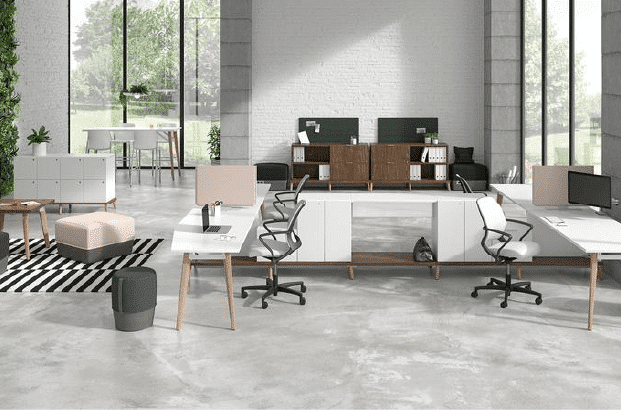Hot desking is a flexible workspace strategy that can enhance collaboration and efficiency within an office environment. By allowing employees to choose their workspace, organizations can adapt to their evolving needs and foster a more dynamic workplace culture.
Enhanced Collaboration
Hot desking encourages increased interaction among team members.
In a traditional office setup, employees often remain isolated in their own cubicles, limiting spontaneous conversations and collaboration. Hot desking breaks down these barriers by creating a more open workspace that invites individuals from different teams to engage with one another. This interaction can lead to innovative ideas and collaborative projects, as employees share insights and expertise in an informal setting. Furthermore, the dynamic nature of hot desking can foster a sense of community and teamwork, essential for a productive work environment.
Cost Efficiency
Implementing hot desking can lead to significant cost savings.
With the reduction of assigned desks, businesses can optimize their office space and reduce overhead costs associated with maintaining a larger facility. Fewer dedicated workspaces mean that organizations can invest in a smaller office, leading to lower rent and utility expenses. Additionally, the efficiency of resource usage can translate into lower operational costs. Companies can also reduce expenditures on furniture and equipment, as shared resources mean less investment in individual setups.
Increased Flexibility
Hot desking offers employees greater flexibility in their work arrangements.
This approach allows team members to select workspaces that best suit their daily requirements, whether they need a quiet area for focus or a lively space for collaboration. Employees can choose where to work based on the nature of their tasks, enhancing both productivity and comfort. This flexibility can also boost employee morale, as workers feel empowered to create an environment conducive to their performance. Furthermore, it accommodates various work styles and preferences, providing a more personalized work experience.
Space Optimisation
Hot desking allows for more efficient use of office space.
By eliminating assigned seating, organizations can maximize the utilization of available space. This means that offices can be designed to include diverse work areas ranging from quiet zones for focused tasks to communal areas that foster collaboration. Such optimization not only creates an engaging workplace but also accommodates the fluctuating numbers of employees present at any given time. It enables better management of office layout and design, catering to the evolving needs of teams and projects.
Adaptation to Remote Work Trends
Hot desking reflects the shift toward more flexible work arrangements.
As remote work becomes increasingly popular, hot desking offers a solution for companies looking to adapt to this trend without sacrificing in-office collaboration. This setup allows businesses to remain agile, accommodating employees who may split their time between remote and in-office work. Providing a flexible workspace can enhance employee satisfaction while maintaining a cohesive company culture. As organizations embrace hybrid models, hot desking serves as an ideal strategy to meet both operational needs and employee expectations.
Boosting Employee Engagement
Hot desking can enhance employee engagement through varied work environments.
The ever-changing workspace can stimulate creativity and enthusiasm among employees, preventing the monotony that can arise in a static office. When employees have the freedom to choose their workspace, they may feel more invested in their daily tasks and interactions. This level of engagement can lead to higher job satisfaction and retention rates, as employees appreciate the autonomy to shape their work experience. Creating an environment that values adaptability can contribute to a motivated workforce.
Promoting a Healthy Work-Life Balance
Hot desking supports a healthier work-life balance.
By encouraging employees to choose their workspaces based on personal preference and task requirements, hot desking facilitates a more balanced approach to work. For example, employees can select quieter spaces when they need concentration or communal areas when they seek collaboration. This autonomy can reduce stress and promote a healthier work environment overall. Additionally, offering flexible work arrangements aligns with the modern workforce’s desire for work-life integration, enhancing overall job satisfaction.
Embracing a hot desking strategy can transform a workplace into a more collaborative, cost-effective, and employee-focused environment. Organizations that implement this flexible approach can expect to see increased creativity, satisfaction, and productivity from their teams.

